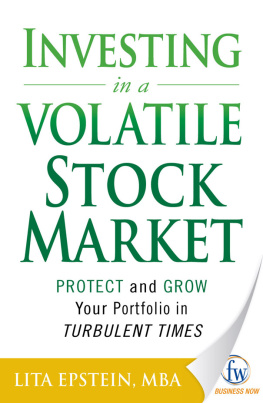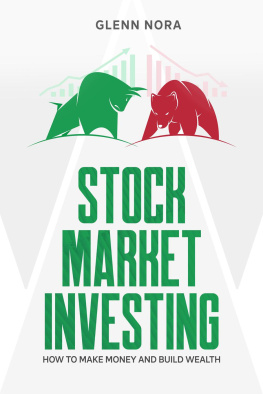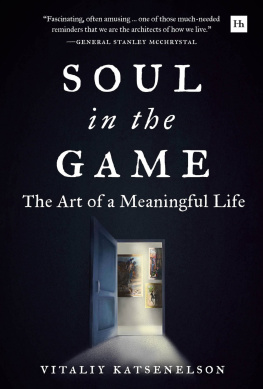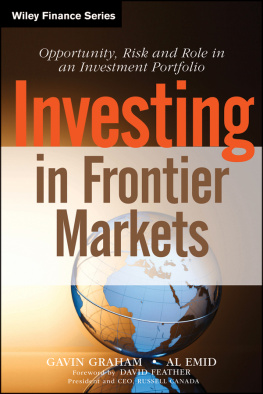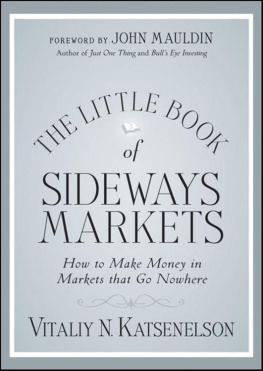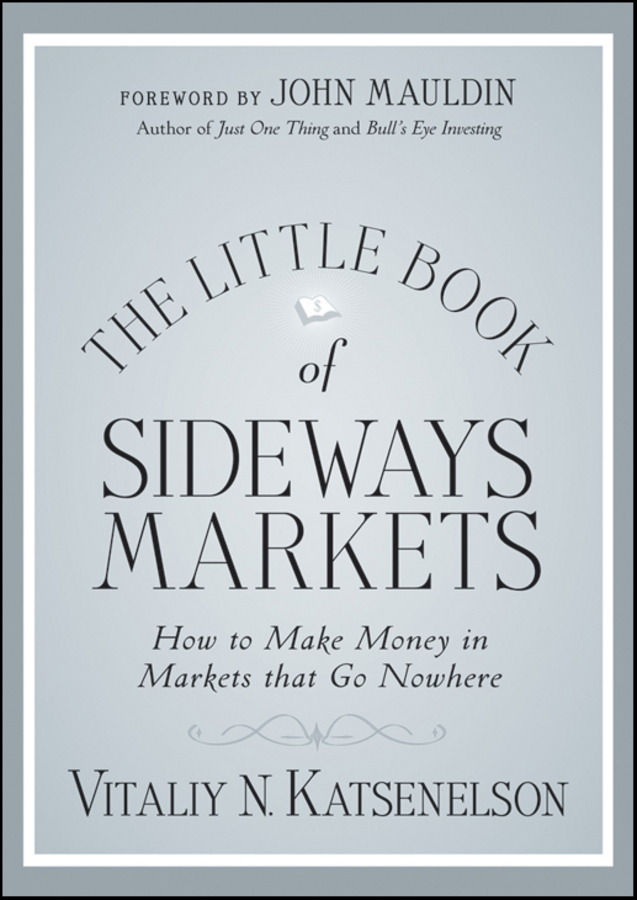Vitaliy N. Katsenelson - The Little Book of Sideways Markets: How to Make Money in Markets that Go Nowhere
Here you can read online Vitaliy N. Katsenelson - The Little Book of Sideways Markets: How to Make Money in Markets that Go Nowhere full text of the book (entire story) in english for free. Download pdf and epub, get meaning, cover and reviews about this ebook. year: 2010, publisher: Wiley, genre: Business. Description of the work, (preface) as well as reviews are available. Best literature library LitArk.com created for fans of good reading and offers a wide selection of genres:
Romance novel
Science fiction
Adventure
Detective
Science
History
Home and family
Prose
Art
Politics
Computer
Non-fiction
Religion
Business
Children
Humor
Choose a favorite category and find really read worthwhile books. Enjoy immersion in the world of imagination, feel the emotions of the characters or learn something new for yourself, make an fascinating discovery.

- Book:The Little Book of Sideways Markets: How to Make Money in Markets that Go Nowhere
- Author:
- Publisher:Wiley
- Genre:
- Year:2010
- Rating:5 / 5
- Favourites:Add to favourites
- Your mark:
The Little Book of Sideways Markets: How to Make Money in Markets that Go Nowhere: summary, description and annotation
We offer to read an annotation, description, summary or preface (depends on what the author of the book "The Little Book of Sideways Markets: How to Make Money in Markets that Go Nowhere" wrote himself). If you haven't found the necessary information about the book — write in the comments, we will try to find it.
A thoroughly enjoyable read. Provides a clear framework for equity investing in todays sideways and volatile markets useful to everyone. Clear thinking and clear writing are not often paired - well done! -- Dick Weil, CEO, Janus Capital Group
The bible for how to invest in the most tumultuous financial market environment since the Great Depression. A true guidebook for how to build wealth prudently. -- David Rosenberg, Chief Economist & Strategist, Gluskin Sheff + Associates Inc.
A wonderful, grounded read for new and seasoned investors alike, Katsenelson explains in plain English why volatility and sideways markets are a stock pickers best friend. -- The Motley Fool, www.Fool.com
Praise for Active Value Investing
This book reads like a conversation with Vitaliy: deep, insightful, inquisitive, and civilized. -- Nassim Nicholas Taleb, author of The Black Swan
Q&A with Author Vitaliy N. Katsenelson
What approach do you recommend taking in sideways markets?
What I propose in the book (and practice in life) is active value investing. Instead of being a market timer, Im a buy-and-sell investor, with a focus on valuing individual stocks.
Find stocks that lie within your circle of competence, analyze them as to whether they meet your qualitative criteria (such as competitive advantage, strong balance sheet, high return on capital, shareholder-friendly management. etc.), value them, determine an appropriate margin of safety (discount to fair value, which should be increased in range-bound markets), and youll thereby arrive at a price at which youd want to buy them.
If a stock trades at or below your buy price, buy it; if not, put it on your watch list. When the stock reaches your fair-value level, you dont hold it, you sell it. Repeat this process over and over again.
What is one piece of advice youd give to readers about investing in sideways markets?An investor makes money from stock appreciation and dividends. Stock appreciation is driven by P/E expansion and earnings/cash flows growth. If you see an apparent catalyst (news or event) that will force P/E to go up great! But in my experience I found that it is the apparent absence of a catalyst that creates an undervaluation. Wall Street is fairly short-term oriented, therefore if the stock is undervalued but there is no reason or a catalyst to help it go up in the next quarter or two, it gets dumped.
Here is what I propose. Buy stocks that grow earnings and pay dividends, this will put time on your side -- you are getting paid to wait.
Earnings growth is compressing P/E under the stock and dividends are a real time payment for your patience. If a company doesnt grow earnings and pays little dividend, make sure undervaluation (potential P/E expansion) is significant, or there is a clear catalyst, as time is not on your side in this case. For instance, if you find a stock that is 20 percent undervalued, there is no catalyst, no dividend or earnings growth it is probably not worth buying.
What is a dont when it comes to investing in sideways markets?We need to shield ourselves from the outside world. I am not advocating moving into a cave with no electricity. But we should not allow the outside into our lives unchecked. If we do, the market will become our master, dictating what we do which is the opposite of what we should be doing. I actively try to isolate myself from influences of the market. I found the most productive time I have is on airplanes, because I can write and think for hours; there is little interference by the outside world. I really try hard to only check the prices of my stocks a few times a day. I have not perfected this yet we all have bad habits that it takes time to break. But if we are aware of the negative influences the outside world can have on us, there may be hope for changing our behavior.
I usually try to read newspapers and otherwise keep up with the news before I get to the office. Then I try (this is still an effort) to turn off the Wi-Fi switch on my laptop this kills the internet, including email, Skype, IM, and RSS feeds. I try to recreate a plane-like environment at work. I dont turn on the TV during the day. And when I do tune back in, I try to listen to more podcasts, and watch PBS more and business TV less. So to answer your question, I think we should create an environment where the outside world doesnt change (shrink) our time horizon.
Vitaliy N. Katsenelson: author's other books
Who wrote The Little Book of Sideways Markets: How to Make Money in Markets that Go Nowhere? Find out the surname, the name of the author of the book and a list of all author's works by series.

